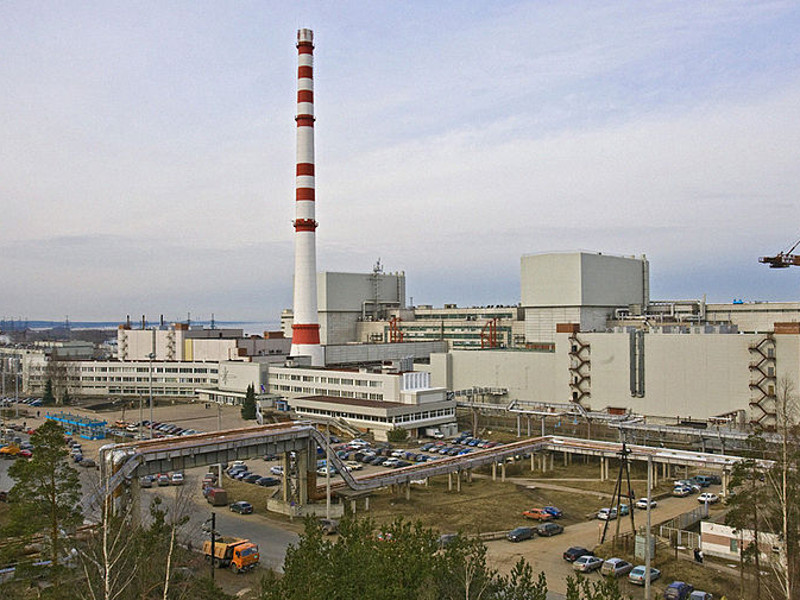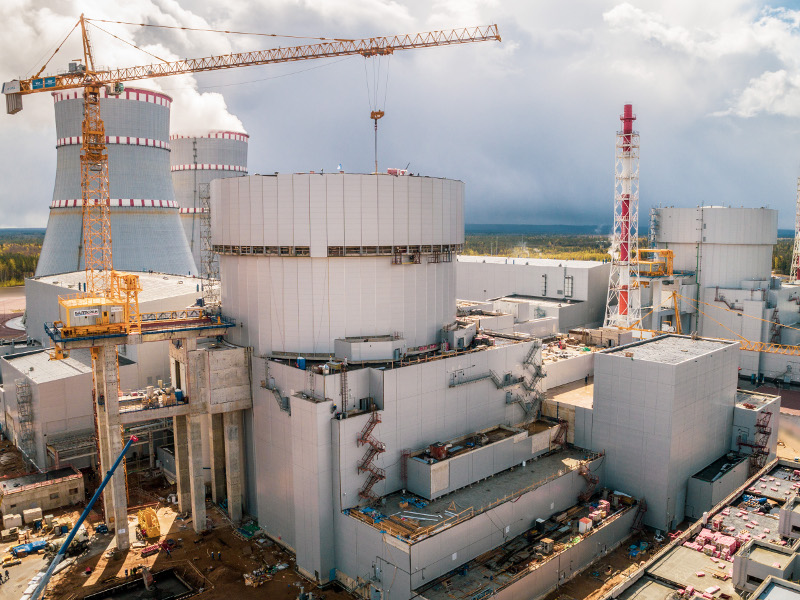The Leningrad NPP-2 is a new nuclear power plant (NPP) located adjacent to the Leningrad I nuclear power plant in the federal subject of Leningrad Oblast in Russia. The first reactor unit of the Leningrad NPP-2 facility was constructed to replace one of the RBMK-1000 units of the old plant.
The Leningrad NPP-2 is the second power unit in the world to use the third-generation VVER-1200 water-water power reactor after the first unit was launched at the Novovoronezh NPP in southwestern Russia in 2016. Construction on the second power block of the nuclear power plant that will replace the second RBMK-1000 reactor is currently underway. The approval for the physical start-up of the second unit was received in July 2020, following the completion of hot trials and readiness tests in June 2020. Unit 2 is expected to be commissioned in the first quarter of 2021.
In June 2020, Rosenergoatom announced the decision to install two additional units (Unit-3 and Unit-4) with VVER-1200 reactors at the Leningrad NPP-2 site. The company is planning to conduct a preliminary work implementation project at the construction site of the proposed units by the end of 2020.
Leningrad Nuclear Power Plant development
The Leningrad NPP is the largest nuclear-based power plant in Russia with an installed capacity of 4.2GW. Additionally, it is the country’s only nuclear plant that uses two types of reactors.
Project Gallery
-

The Leningrad NPP-2 is a nuclear power plant facility located in Sosnovy Bor. Image courtesy of Rosenergoatom, Joint-Stock Company.
-

The nuclear power generation facility was constructed to replace one of the four RBMK-1000 units at Leningrad I. Image courtesy of RIA Novosti archive, image #305005 / Alexey Danichev / CC-BY-SA 3.0.
-

Unit-1 of Leningrad NPP-2 features two cooling towers, while Unit-2 has only one, larger cooling tower. Image courtesy of Rosenergoatom, Joint-Stock Company.
It features three uranium-graphite channel-type RBMK-1000 reactors and one pressurised water-type third-generation VVER-1200 reactor. The Unit-1 power block, which was the country’s first 1,000MW reactor, was decommissioned in December 2018 following 45 years of operation.
The RBMK-1000 reactors Unit-2, Unit-3, and Unit-4 with an installed capacity of 1,000MW each are currently in operation. They were commissioned in July 1975, December 1979 and December 1981, respectively.
The Leningrad NPP is currently the biggest electric power producing plant in the north-western part of the country, accounting for approximately 30% of the region’s total power generation. The newest reactor, Unit-5 with the VVER-1200 reactor and installed capacity 1,200MW, was commercialised in March 2018.
The Unit-5 reactor, which is part of the Leningrad NPP-2 development, is the first unit of the Leningrad NPP-2 and is also referred to as Unit-5 reactor of the older Leningrad NPP.
Leningrad NPP-2 development
Construction of the first unit of Leningrad NPP-2 began in October 2008, while start-up operations commenced in December 2017 with the loading of the first fuel assemblies into the reactor vessel. Unit 1 achieved critical status in December 2017. The unit was connected to the national grid and produced electricity for the first time in March 2018.
The construction works on the second unit are currently in its final stages. Unlike the first unit, which has two evaporative cooling towers, the second unit has only one.
The construction of the cooling tower started in August 2014 and was completed in October 2018. At 167m high, the tower is taller than the two Unit 1 towers. Unit 2 is also installed with five emergency diesel power generators with a capacity of 6.3MW each.
Leningrad NPP-2 reactor details
The water-powered VVER-1200 power reactors belong to the newest generation of third-generation plus reactors that meet all the post-Fukushima requirements. The reactor pressure vessel has a service life design of 60 years.
The primary coolant pipe that links the reactor, steam generators and reactor coolant pumps have a nominal diameter and wall thickness of 850mm and 70mm respectively. The reactor coolant pump features a flywheel that ensures smooth coolant circulation rundown in case of accidents with power loss. The steam generators used in the VVER reactors involve horizontal design to mitigate the risk of stress-corrosion cracking, denting, and fouling.
The reactor core comprises 163 hexagonal design fuel assemblies with 13 spacer grids having a gap of 340mm and a fuel column height of 3.73m. A total of 121 control rods are used to control the reactor output. The reactor containment building is double-walled which is the standard for all future units as well.
The VVER-1200 reactors feature a unique combination of active and passive safety systems. The passive safety systems are designed to run even if the electric supply fails. The power blocks also use a melt trap afterheat removal passive system for long-term thermal discharge from the reactor core in the event of power supply failure.
Partners involved
The VVER-1200 water-water power reactors are developed by Atomprojekt JSC, Rosatom’s leading enterprise in nuclear research and facility design.
Atomenergomash, a division of Rosatom, provided key equipment for Unit 1 of LNPP-2, while the main circulation pumps were produced by TsKBM.
ASE JSC is the general contractor for Unit 2 and Titan-2 Holding is the general contractor for the construction of the power units of Leningrad NPP-2.
The steam generators were manufactured by power machinery manufacturer ZiO-Podolsk.
